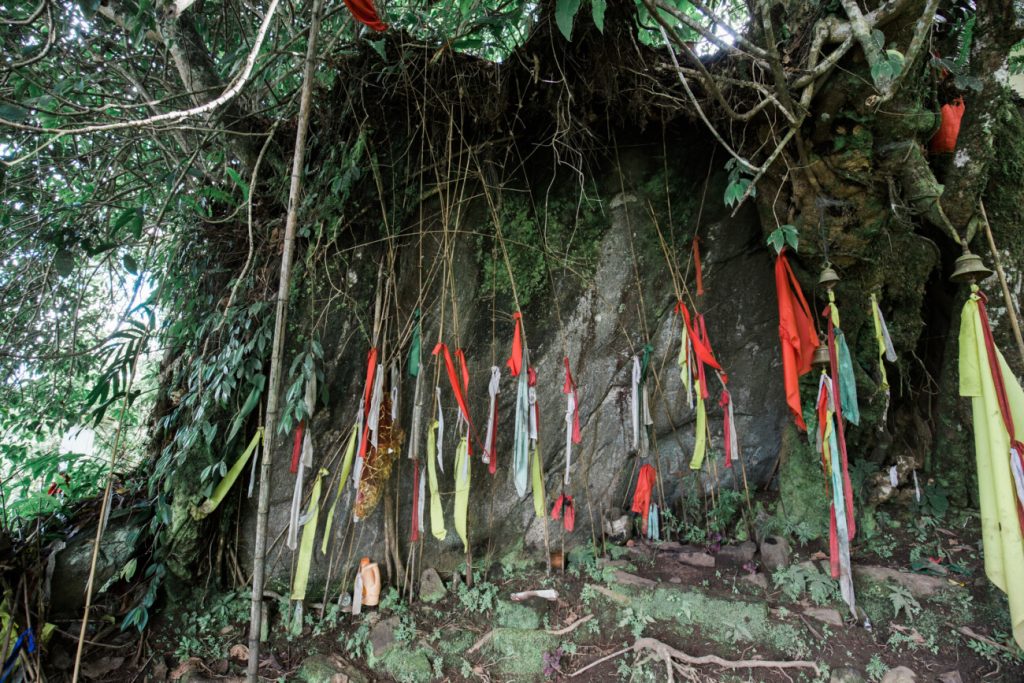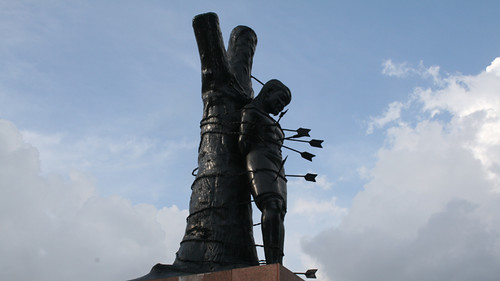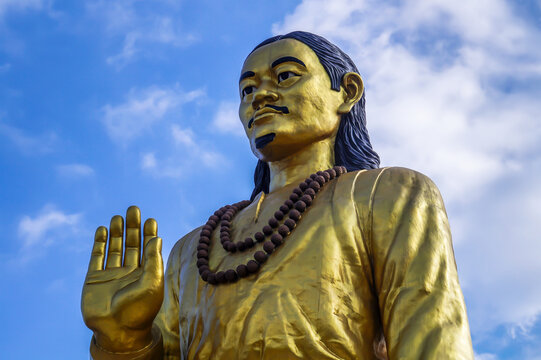Introduction
Tye-Angsi Sirijanga Thebe Limbu was an eminent figure during the 18th century, hailing from the Limbu community and making significant contributions as a scholar, educator, historian, linguist, leader, and philosopher in the regions of Limbuwan in Nepal and Sikkim. Revered for his profound knowledge and wisdom, he went by the formal title of Sirichongba but was more widely recognized and affectionately referred to as “Sirijanga”. His multifaceted expertise and dedication to preserving the cultural heritage of the Limbu people underscored his enduring legacy, marking him as a pivotal figure in the intellectual and cultural landscape of his time.
Life
Sirijanga, who was born in Tellok Kuchintar (Yangwarok area) in Limbuwan in 1704 with the real name Rupi Hang, carried a name element, Hang or Yakthung, symbolizing high or royal lineage, which was commonly used among the Limbu community. Embracing his Lepcha nickname, he proclaimed himself as the embodiment of the renowned 9th-century historical character known as “Sirijanga Hang”. Traditionally, it was believed that this legendary figure was responsible for the preservation and revitalization of the ancient Limbu script, yet contemporary perspectives suggest that Sirijanga himself, during the 18th century, likely concocted the Sirijanga Hang tale as a strategy to garner greater trust and followership among the Limbu and Lepcha populations. This deliberate narrative construction by Sirijanga aimed at fostering belief and adherence to his teachings, thus portraying him as a figure of historical significance and cultural relevance within the community’s consciousness. The legacy of Sirijanga endures through the blurred lines between myth and reality, reflecting the intricacies of cultural identity and belief systems that continue to shape the heritage of the Limbu and Lepcha peoples.
Unveiling the Contribution of Sirijunga
Sirijanga Sing Thebe, a dedicated scholar and educator, delved deeply into the research and teaching of the ancient Limbu script language and the rich religious traditions of the Limbu people across the expansive territories of Limbuwan in Nepal and Sikkim, India. Striving to preserve the cultural legacy of the Limbus, Sirijanga embarked on a significant mission of reviving the long-forgotten Limbu script, breathing new life into a vital aspect of their heritage. His passion for cultural preservation shone through as he meticulously documented and curated an extensive collection of Limbu literature, meticulously piecing together historical narratives and cultural traditions.

Journeying through the remotest corners of the region, Sirijanga sought to unearth and preserve the essence of Limbu knowledge and traditions, gradually becoming a beacon of enlightenment for his community. With unwavering dedication, he traversed from village to village, sharing his discoveries and establishing educational hubs to promote Limbu learning and awareness. Through his tireless efforts, Sirijanga laid the groundwork for a profound cultural revival among the Limbu people, pushing back against the pervasive influence of Tibetan Buddhist cultural hegemony.

Emphasizing the importance of broad cultural exposure, Sirijanga championed the idea that acquiring diverse knowledge and experiences was fundamental to the revitalization and enrichment of a community. In his pursuit of cultural enlightenment, Sirijanga initially immersed himself in the teachings of local Tibetan Buddhist lamas, savoring the wisdom of an ancient tradition that had shaped the region for centuries.
As the tides of cultural change swept across the land, Sirijanga keenly observed the influx of the Hindu-based Khas culture from the western hill districts of Nepal. Striving to comprehend the evolving cultural landscape, he expanded his linguistic repertoire to include the contemporary Khas language, now recognized as Nepali. Seeking to foster alliances and garner support for his cultural cause, Sirijanga embarked on extensive travels, forging connections with rulers and influential figures.

In his quest for cultural unity, Sirijanga’s encounters with King Jayaprakash Malla of Kathmandu stand out as pivotal moments in his journey of discovery. His exposure to diverse traditions and standards, ranging from Buddhist to Hindu influences, equipped him with a nuanced understanding of the cultural tapestry woven across the region. During an era marked by territorial conflicts and power struggles, Sirijanga witnessed the clash between the Bhutanese, Sikkimese, and Limbu authorities, as they vied for dominance in the eastern Himalayan expanse.
The seeds of conflict, deeply rooted in the politics of culture and knowledge, came to define the landscape where Sirijanga operated. The ascendancy of Sikkimese Tibetan rulers and Buddhist monastic institutions wrought significant changes, leading to the subjugation of the Yakthung region and eventual cultural encroachment in Limbuwan. Recognizing the imperative of a harmonious, knowledge-driven movement, Sirijanga advocated for peaceful methods to safeguard his community’s cultural heritage.

Sirijanga’s indelible contributions to the proliferation of the Limbu script, language, Mundhum, and literature stand as towering monuments to his legacy. The issuance of a commemorative postal ticket by the Postal Services Department, Nepal Philatelic Bureau, in honor of Sirijanga underscores the enduring impact of his work in the realm of cultural preservation and dissemination.
The Death of Sirijunga: A Tragedy Unfolding

Sirijunga, a prominent historical figure, made a significant impact when he arrived in Sikkim in 1734 during a time of cultural and religious transformation. This arrival was prompted by the Bhutia rulers’ forceful introduction of Buddhism, the Bhutia language, and Tibetan script to the Limbus and Lepchas. The imposition of these new teachings resulted in a profound loss for the Lepchas, as they abandoned their original Munism beliefs in favor of Buddhism.
It was in this period of change that Sirijunga began his mission of teaching yuma mundhum and Limbu script to the Limbus, a move that led to the cessation of their visits to Buddhist monasteries. This shift in allegiance raised concerns among the Buddhist monks, known as thassang lamas, who viewed the diminishing influence of Buddhism among the Limbus as a threat to the future of the religion.
In response to these developments, a conspiracy emerged between the Buddhist lamas and the Bhutia rulers to eliminate Sirijunga, recognizing him as a barrier to their religious goals. Aware of the dangers he faced, Sirijunga sought sanctuary in the secluded ‘Sirijunga Caves’, but was ultimately discovered by his adversaries. They cruelly tied him to a tree and brought about his demise in Martam, Sikkim. Following Sirijunga’s tragic end, his disciples met a similar fate, either meeting their demise or fleeing to neighboring Nepal to escape persecution.
The aftermath of these events saw the Limbu language and script banned in Sikkim, leading to a gradual decline and near disappearance of the Limbu language within the region. This ban not only marked the erasure of a linguistic heritage but also underscored the broader cultural conflicts and power struggles that shaped the historical narrative of Sikkim during this tumultuous period of change.

